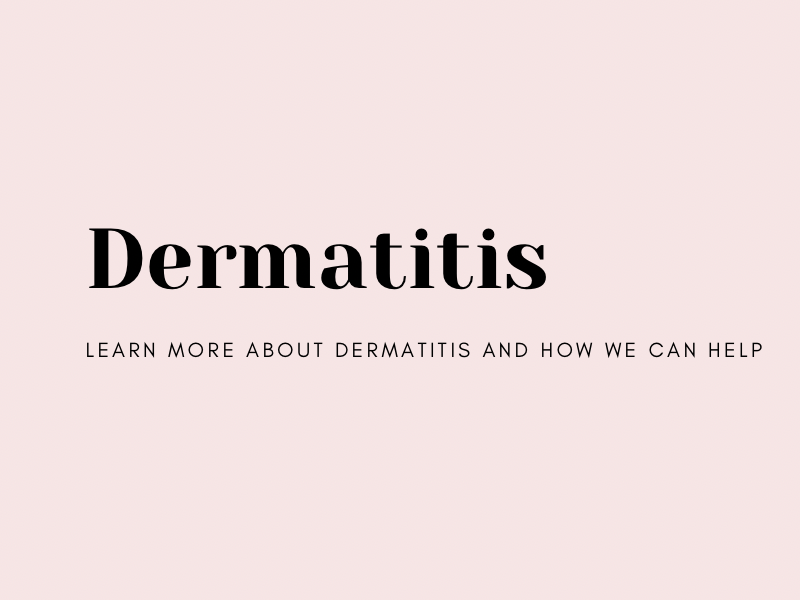Dermatitis
Dermatitis is a broad term used to describe rashes. There are many types of dermatitis. Some of the most common are seborrheic dermatitis, eczema or atopic dermatitis, contact dermatitis, stasis dermatitis, asteatotic eczema, nummular eczema and dyshidrotic eczema.
Seborrheic dermatitis is a chronic, relapsing, form of dermatitis that occurs in areas with a lot of sebaceous glands (scalp, face, upper trunk) in infants to adults. indirect evidence supports a pathogenetic role for the Malassezia yeast. Symptoms can range from dandruff of the scalp, to more widespread involvement characterized by red plaques and white to yellow greasy scales. It is treated with ciclopirox, ketoconazole and topical steroids.
Eczema, or atopic dermatitis is a chronic, itchy, inflammatory skin disease that occurs in children and adults. Features of atopic dermatitis include skin dryness, redness, and oozing and crusting. Treatment is aimed at repairing the skin barrier. Gentle skincare precautions (scent-free, dye-free soaps/moisturizers), frequent moisturizers and emollients, topical steroids and sometimes non-steroidal medications.
There are two types of contact dermatitis- allergic and irritant. Irritant contact dermatitis is a localized, inflammatory skin response to myriad of chemical or physical agents. It is also the most common of the two. In fact, occupational contact dermatitis is the most frequent cause of hand eczema. This is highest among those who wash their hands often- food handlers, healthcare workers, mechanical industry workers, and cleaners/housekeepers. Prevention is important with barrier agents and gloves to prevent exposure to irritants. Treatment includes topical steroids and moisturizing
Asteatotic eczema is a type of itchy dermatitis that typically occurs on the lower extremities of older people with dry skin. Its more common in the winter months and dry, cold weather and central heating are well known exacerbating factors. Treatment includes topical steroids and frequent moisturizers.
Stasis dermatitis is very common inflammatory dermatosis of the lower extremities occurring in patients with chronic venous insufficiency. Patients with stasis dermatitis often have varicose veins, lower extremity swelling, pigment changes, and/or ulcerations. Treatment is geared toward treating the underlying venous hypertension such as weight reduction, walking, compression hose, leg elevation, etc. The dermatitis is treated with occlusive dressings, topical steroids and preventing cellulitis.
Nummular eczema is a chronic, relapsing, inflammatory skin disease characterized by many itchy, coin-shaped, red/scaly lesions. It can affect people of all ages. Treatment is sensitive skin and bath/laundry precautions, topical steroids, moisturizers, etc.
Dyshidrotic eczema is an intensely itchy, chronic, recurrent, dermatitis characterized by small vesicles involving the palms and soles. Treatment includes topical and/or oral steroids, calcineurin inhibitors, etc.


